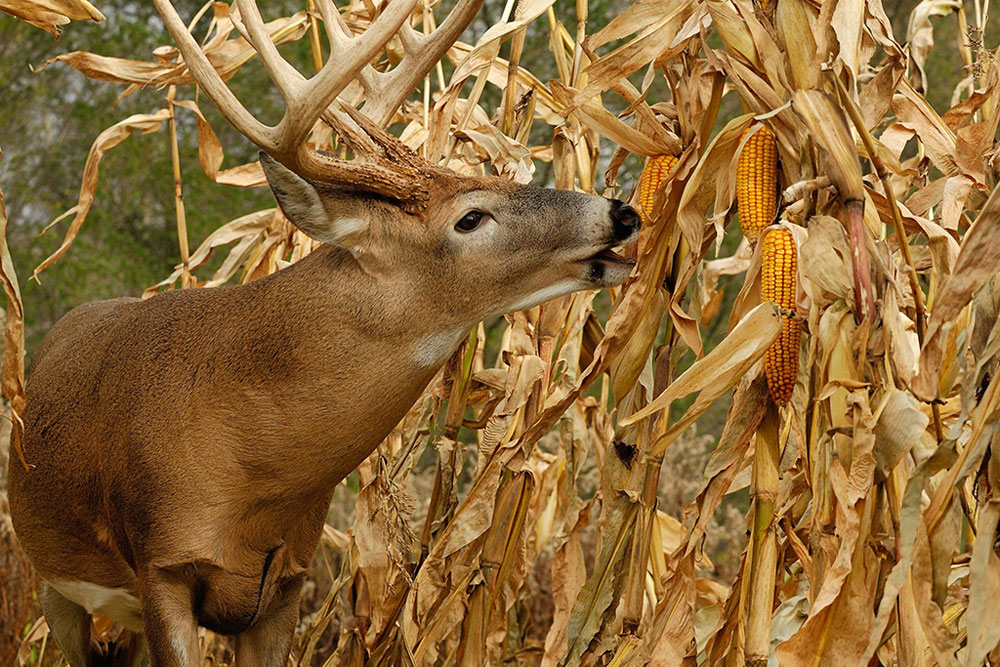
There are some crops that really make a person smile when they grow a successful field. Corn is definitely one of those feel good crops. BioLogic’s Wildlife Sweet Corn is a blend of two heirloom varieties that have over a century of proven reliability. Wildlife Sweet Corn has a sugar content higher than that of new hybrids and is generally consumed earlier in the fall/winter especially when planted in areas with surrounding agricultural corn. The higher protein and nutrient content of this sweet corn is a major bonus for your wildlife. These proven, open-pollinated varieties of corn are non-GMO and are not glyphosate resistant. One variety used in this blend is a dwarf corn that is ideal for all wildlife because of its low ear height, especially waterfowl. The second variety is a high-yielding conventional sweet corn with a taller stalk and superior heat tolerance. As a bonus, this sweet corn is awesome to take home a few ears and feed your family with!
How To Plant Wildlife Sweet Corn
Wildlife Sweet Corn needs 75-95 days of warm growing to reach maturity and maximum yield. Late April to early June for the South, early May to early June for the North. Corn should be planted at 1.5-2 inches soil depth. Planters and no-till drills are ideal for planting if available. Corn can also be broadcast planted into a well-prepared seed bed. Corn seed should be covered to the suggested depth by using a drag harrow or by lightly discing in. Ideally, the field can also then be cultipacked or rolled for increased seedling survival.
Controlling Weeds
Prior to planting, fields should be sprayed with a non-residual, non-selective herbicide such as glyphosate to kill any existing vegetation. Wildlife Sweet Corn is referred to as a conventional corn and is not tolerant to glyphosate post emergence. Pre-emergent herbicides such as Atrazine can be used just before planting to control and limit the weed competition through the growing season.
Fertilizing Corn
Wildlife Sweet Corn is a nitrogen-loving plant and will need plenty to make a good yield. Fertilize according to a recent soil test for your phosphorous and potassium (the last two numbers on a fertilizer bag). For nitrogen requirements, apply 200 pounds of 46-0-0 per acre. High nitrogen fertilizers should ideally be incorporated into the soil just before planting. For maximum yield, another 100 pounds of nitrogen per acre can be broadcast when plants are at V-2 stage (when two leaves are fully emerged with collars visible, typically 7 to 10 days after emergence).
For a closer look at spring and summer food plot options, read “BioLogic’s LabLab: A Unique Spring & Summer Forage for Whitetails.” With more gamekeepers asking what to plant for their deer herd for spring/summer nutrition, we decided to make a comparison between two of the more popular warm season, annual plantings and why LabLab is superior in almost every category. This is not to knock soybeans as they are a good warm season forage for whitetail, but unless you are planting them for the actual bean production for late winter food plots, they fall short in most all categories compared to BioLogic's Lablab.
This article is courtesy of the GameKeepers Farming for Wildlife publication, a quarterly wildlife and land management magazine produced by the Mossy Oak GameKeepers. For more information on subscribing or joining visit Mossy Oak GameKeepers Club.



























